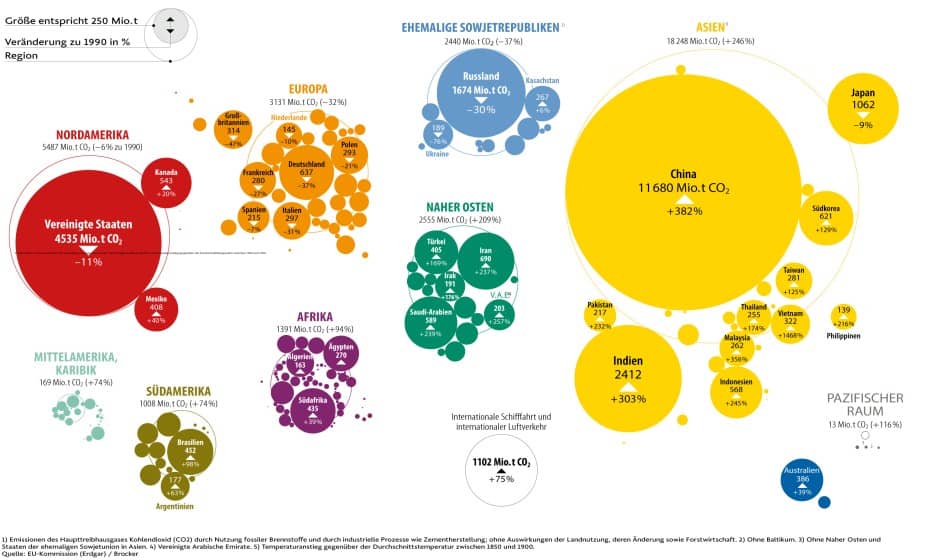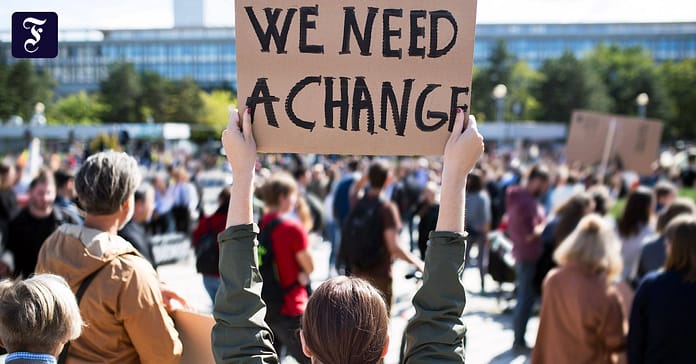DrHe is world climate conference, which begins early next week in Glasgow, is of particular interest in several respects. The importance of the bi-monthly meeting is demonstrated by the fact that it begins with a summit meeting of Heads of State and Government on the 1st and 2nd of November. It is also unusual for the most important leaders to see each other live beforehand in Rome at the conference of the 20 largest economies (G20) and from there they will move on to Scotland. The G20 summit will also deal with climate issues, which is why expectations are high that influential countries, led by the United States and China, will send a strong signal there or in Glasgow for the success of the climate negotiations.
Including them in policies that are too big makes the global climate conference less likely to fail altogether, and increases the chances for negotiators and ministers to eventually produce tangible results. This is the second major of the Glasgow meeting: it is considered the most important climate conference – also known as the “Conference of the Parties” (COP) – since the signing of the Paris Agreement in 2015. At that time, 196 members had signed the Framework Convention on Climate Change United nations (United Nations Framework Convention on Climate Change) a treaty under international law to protect the global climate following the 1997 Kyoto Protocol; For the first time, industrialized and developing countries combined. Specifically, the contracting parties have pledged to limit anthropogenic (man-made) warming to well below 2 degrees compared to pre-industrial values, if possible to 1.5 degrees.
No meeting was so important yet
Since then, countries have met regularly, but no meeting has been as important as COP 26 in Glasgow. Because here, after five years of ‘Paris’, balance sheets must be made of what has been achieved so far, and climate efforts must be tightened up and made more precise. The urgency of action is indisputable and has been scientifically proven in recent years. There is better evidence that extreme weather events – whether they are fires, storms or floods as in the Ahr Valley – are consequences of climate change. The Intergovernmental Panel on Climate Change (IPCC) also recently made it clear that the preventive efforts made so far are not close enough to achieving the 1.5 degree target and that they must therefore be tightened.
The central instrument for this is the so-called Nationally Determined Climate Contribution (NDC), which was agreed to be introduced in Paris. On the other hand, it is considered toothless, because the contracting states can determine the reduction of greenhouse gas emissions by themselves; There are no internationally or internationally binding targets for it, nor is there any obligation to achieve NDCs. However, it is positive that all countries have promised such national climate protection measures, are willing to show the way there on a regular basis and, above all, have to sharpen their Nationally Determined Contributions at least every five years.

million tons 2020¹⁾World map of carbon dioxide emissions
It could have been 2020 for the first time, but COP26 has been postponed due to the pandemic, giving countries an extra year. In the meantime, the most stringent NDCs were in most cases presented or expected to be presented immediately at the conference, for example from China, the world’s largest emitter, from India, Saudi Arabia or Turkey. The European Union and Germany recently tightened their NDCs: they want to become completely greenhouse gas-neutral by 2050 and 2045 respectively. In 2030, emissions must be reduced by at least 55%, or, in the German case, by 65% compared to 1990 levels.





